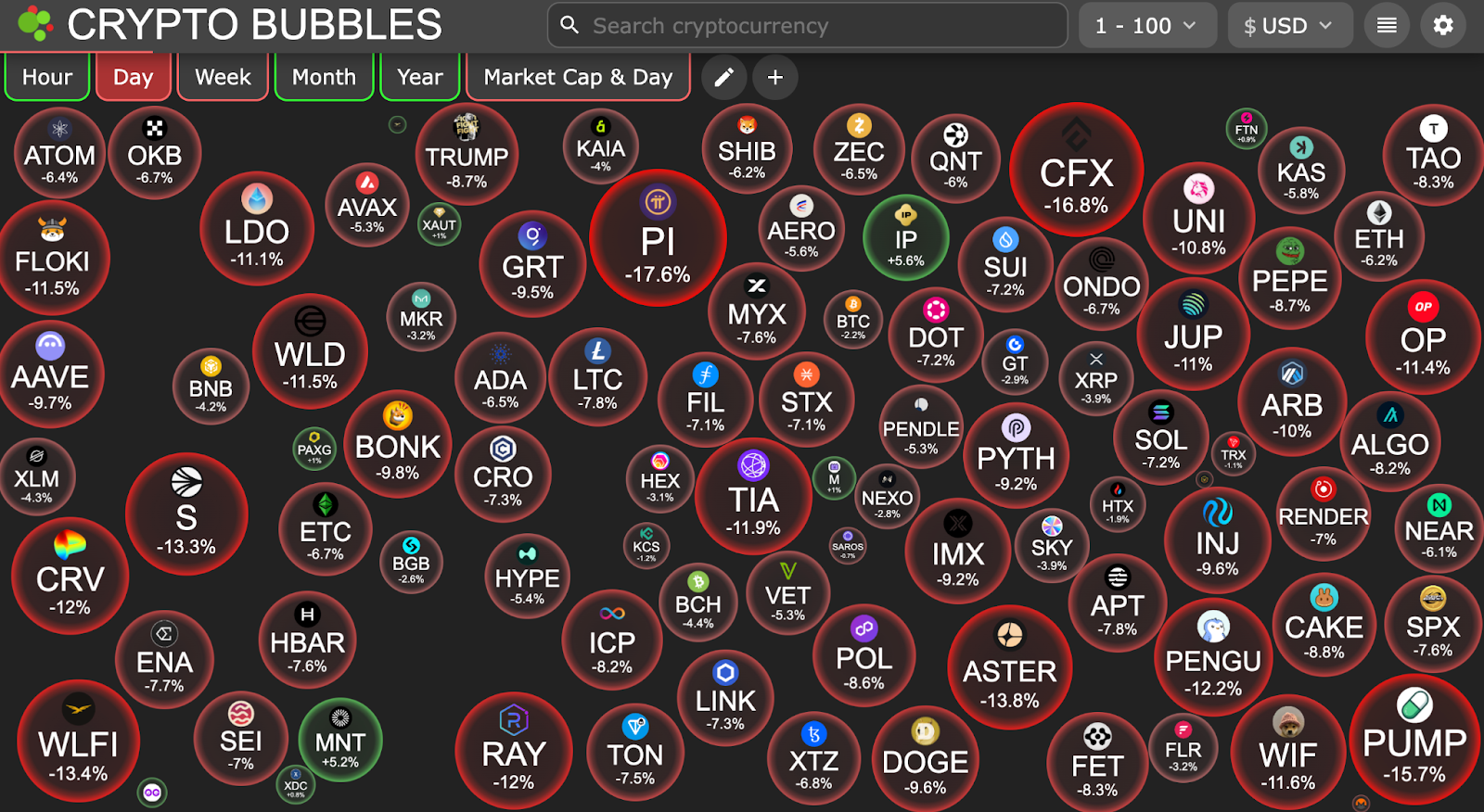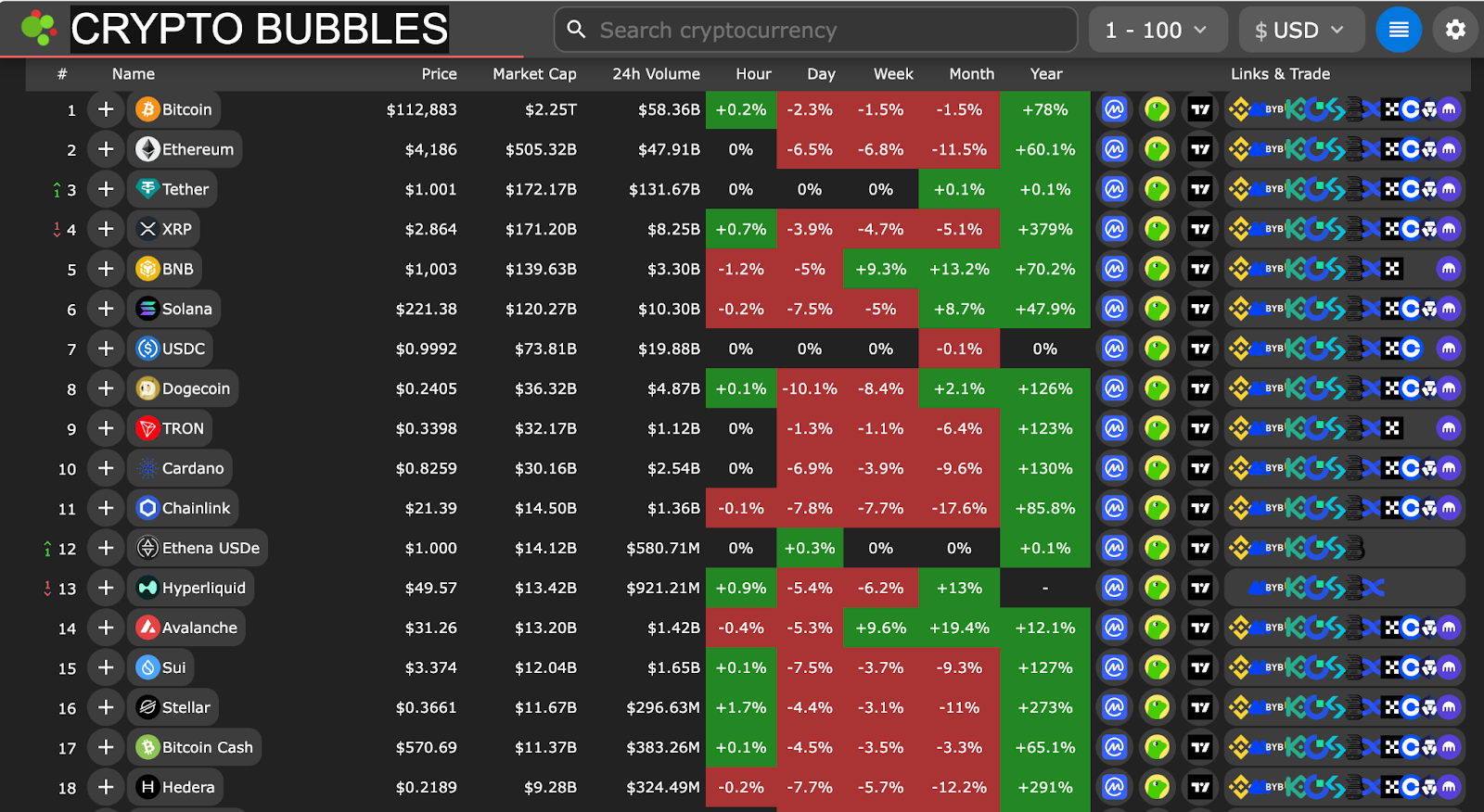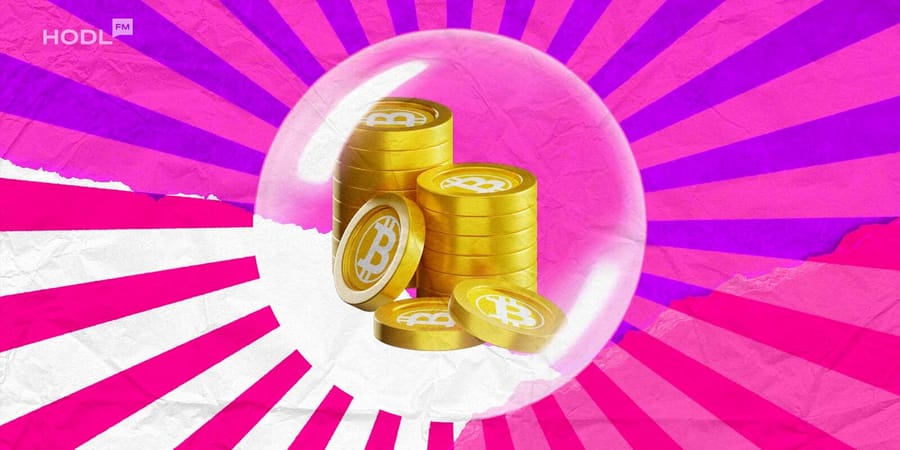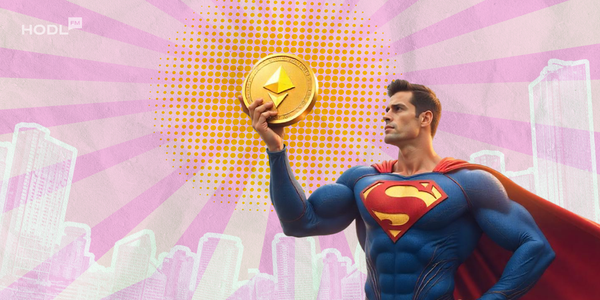The crypto market is full of ups and downs. Some investors are celebrating record-breaking earnings, while others are stuck with investments that have lost a lot of value. The crypto bubble is an important idea for understanding this volatility. This word is used a lot in financial news and informal online forums, and for good reason: these times of tremendous happiness and then collapse are a big part of what makes the market what it is.
It's not only a good idea for any investor to learn how to recognise and survive a bubble in cryptocurrency; it's necessary for long-term success. This guide will show you what crypto bubbles are, provide you with some examples from the past, and show you how to deal with them.
What is a crypto bubble?
When the price of an asset, like stocks, real estate, or tulips, rises much higher than its true value, that's called a bubble. This price rise is caused by speculation, hype, and a lot of new, excited investors who want to get rich soon. People sometimes equate the process to a balloon: as more and more money (air) is pushed into the market, asset prices rise at an unsustainable rate. When the last investor buys in, there is no more new money available. At this stage, any bad news or incident can pop the crypto bubble like a pin, and the result is a quick and painful price drop.
This isn't a novel idea. The tulip mania of the 1630s, when the price of tulip bulbs in the Netherlands went through the roof and then fell, is the most well-known early example. The dot-com bubble of the late 1990s is another example. At that time, internet companies with little to no revenue were worth billions of dollars before the market corrected. The technology and assets are different, but the psyche is the same.
The cryptocurrency bubble is caused by a unique mix of technological promise and speculative trading, which makes it especially vulnerable to these big swings. Many cryptocurrencies don't make money or create revenue like other assets do, which makes it hard to figure out their true value. Because there isn't a strong anchor, market sentiment and emotion, not fundamentals, are what really move prices.
Past examples of crypto bubbles
The history of crypto is a story of boom-and-bust cycles. Each major crypto market bubbles has its own unique characteristics and triggers, but they all share the common theme of excessive speculation followed by a sharp correction.
Bitcoin 2017 bull run
A lot of people learned about crypto for the first time during the 2017 bull run. Bitcoin's price started to go through the roof after years of being a niche asset for computer fans. KuCoin exchange data shows, it started the year below $1,000 and rapidly rose, thanks to a story about how it was becoming popular. By December 2017, its price was close to $20,000, which was about 20 times what it was worth less than a year before. The media was captivated, and everyone, like Uber drivers, even grandmothers, was talking about getting Bitcoin. This mass hysteria, however, could not last, and by early 2018, the Bitcoin bubble started to burst. This led to a lengthy and bitter "crypto winter" during which the price dropped by more than 80%.
The ICO boom 2017- 2018
Bitcoin wasn't the only thing that went up in value in 2017. The Initial Coin Offering (ICO) craze was a time of crazy new ideas and risky fundraising. Every day, new projects are started, and investors can buy tokens for goods and services that are still being worked on. The process was basically a type of decentralised crowdsourcing, with platforms like Ethereum helping it along. Many enterprises promised to be "the next Bitcoin" or "the new internet," and millions of dollars went into these dubious businesses. According to a paper published on arXiv, the total amount raised by ICOs in the last eight months of 2017 exceeded $4 billion. But a lot of these ICOs were scams or projects that didn't work out and had no real use case. The cryptocurrency bubble burst when market reality hit, and its collapse led to billions of dollars in losses for investors, many of whom also faced legal action.
NFT mania 2021
A perfect storm of circumstances, including institutional interest, low interest rates, and the emergence of decentralised finance (DeFi) and non-fungible tokens (NFTs), set off the bull run from 2020 to 2022. The NFT market was the best example of this new phase of too much. Digital art and artefacts sold for millions of dollars, and projects like the Bored Ape Yacht Club became cultural phenomena. Forkast News shows global NFT sales amounted to approximately $18.5 billion in 2021, a massive increase from the previous year. Celebrities and big businesses started their own collections, while the argument over whether or not crypto is a bubble continued. The NFT boom showed how powerful digital scarcity and community-driven value can be, yet prices were frequently not based on how much art or assets were worth in the real world. In 2022, the NFT market plummeted drastically, with floor prices of once-popular collections dropping by more than 90% as the rest of the market got worse.
Terra/LUNA collapse 2022
The Terra/LUNA collapse in May 2022 was a quick implosion that caused a fresh market-wide panic. This was different from the prior bubbles, which took months to deflate. TerraUSD (UST) was an "algorithmic stablecoin" that was supposed to stay at a 1:1 value with the US dollar. Its sister coin, LUNA, was responsible for keeping it stable. When UST lost its peg because a lot of people sold it, both tokens went into a death spiral that cost investors more than $45 billion in a single week. The collapse's domino effect triggered the bankruptcy of Celsius and other major crypto funds and lenders, and wiped out trillions of dollars in market value. It showed the world that even assets that promised "stability" might fall apart, and that the market was full of investments that were too leveraged and ready to explode.
What causes a crypto bubble?
To be able to spot these bubbles in the future, you need to know what creates them. They aren't random; they happen because of a mix of how people think and how the market is doing.
- Speculation and FOMO: Speculation is at the heart of every bubble. People who invest in an asset don't do it because they need it; they do so just to sell it for more money. FOMO (Fear of Missing Out) makes this even worse by creating a strong "bandwagon effect" that makes people hurry to buy in, which drives prices even higher.
- Excessive leverage: Investors who are too sure of themselves use borrowed money (leverage) to make their stakes bigger as the market goes up. This makes the ecosystem weak, so a slight price decline can cause huge liquidations, which leads to a chain reaction of selling that speeds up the fall. Excessive leverage is a major cause of volatility, just like subprime mortgages were during the housing crisis in 2008.
- Hype and media attention: Mainstream media and social media can make things happen that they say will happen. When news sources and influencers start talking about how quickly crypto prices are going up, they draw in a new group of retail investors who don't know anything about it. This influx of fresh, uneducated money pushes the bubble into its last, unsustainable stage.
- Lack of fundamentals: Most cryptocurrencies don't have standard value indicators like profitability and a balance sheet. This makes it hard to find a "fair" price, which lets emotional trading take over. Robert Shiller, who won the Nobel Prize in economics, remarked that bitcoin is the "best example today of a speculative bubble" because there is no real item to which you can relate its value.
- New technology and narratives: Every cycle brings with it a new story that captures the public's imagination, whether it's ICOs, DeFi, or NFTs. A lot of money comes from investors who are excited about a new frontier but may not completely comprehend how the technology will work in the long run. This makes the price and utility not match up.
- Bitcoin's halving cycle: The four-year Bitcoin halving cycle is something that makes crypto booms different. After the halving event, which slows down the creation of new Bitcoin, there is generally a big bull run. It doesn't directly drive the market cycle, but it is a big factor because a lot of investors expect the supply shock and start buying in.
How do you know if crypto is in a bubble?

Spotting a bubble crypto is less about timing the top and more about recognizing the signs of an irrational market. Here's what to look for:
- Exponential price growth: A cryptocurrency's price going up a lot in a short amount of time without any major changes to its fundamentals is the most evident sign. A quick, vertical rise on a crypto bubbles chart is a big warning sign. When rates go up by 10 times or more in a few months without more people using the service, the likelihood of a bubble becomes much higher.
- Mass media and mainstream hype: When individuals who don't care about money start asking you about crypto, you're probably in a bubble. On social media, you'll find a lot of mainstream news stories, late-night show monologues, and celebrity endorsements.
- Fear and Greed Index: Market sentiment indicators show how people think and feel. The Fear and Greed Index, which uses a number of different variables to gauge social emotion, usually hits "Extreme Greed" levels during bubbles. When there are bubbles, Google searches for cryptocurrency terms go up, which shows that people are speculating. Social media mentions and engagement rates likewise reach their highest points near the tops of bubbles.
- Network Value to Transaction (NVT): NVT ratios help find overvalued cryptocurrencies in the market. NVT compares the market capitalisation of a network to the number of transactions that take place on it. This is similar to how price-to-earnings ratios work for stocks. High NVT ratios mean that prices have gone up faster than actual use, which could mean that a bubble is forming.
- Relative Strength Index (RSI): Technical indicators provide you more warnings about bubbles. When the Relative Strength Index (RSI) is above 70, it means the market is overbought. When it stays above 80 for a long time, it means there is a lot of speculation. When trading volume goes along with price rises, it means that the momentum isn't going to last. During bubble peaks, put/call ratios on options markets often exhibit tremendous bullishness.
- New ICO/Token frenzies: A lot of new ventures that get a lot of money, often with weak whitepapers or no working product, are a traditional sign. Entrepreneurs sometimes rush to take advantage of speculative demand, which lowers the quality of new initiatives. During bubble stages, ICOs, meme coins, and copycat enterprises grow quickly.
- Visualizing the market: Tools like a crypto bubble map can be quite helpful for seeing the market. A bubble chart of Bitcoin shows the whole market. The size of each bubble shows the market cap, and the colour shows how prices have changed recently. This offers you a rapid, overall snapshot of the crypto bubble and helps you find the areas that are getting too big.
How to survive a crypto bubble

Knowing a bubble is forming is one thing; surviving it is another. The following are practical, actionable tips to help you manage risk and protect your investments.
- Diversify your portfolio: Don't put all of your money into one thing. If one asset or market fails, having a mix of different cryptocurrencies and asset types (including equities, bonds, and real estate) can help protect you. Crypto baskets and other tools make it easy to spread your money among several different crypto assets.
- Do Your Own Research (DYOR): Don't take advise from celebrities or social media. Before you put money into a project, read its whitepaper, learn about its team, and find out how it will be used. Is it a real solution to a real problem, or is it just another way to get money quickly?
- Prioritize self-custody: The failures of Mt. Gox and FTX highlight how risky centralised exchanges can be. You have full control over your assets and are protected from the mistakes of other people when you keep them in a self-custody or cold wallet.
Conclusion
People often say that "crypto is a bubble," but the truth is that the market goes through these cycles of too much excitement and too little correction. But there is a silver lining to every bitcoin bubble burst: it gets rid of the scammers and risky businesses, leaving a stronger, more stable base for the next wave of new ideas. Even if short-term speculation gets a lot of attention, the long-term promise of Web3 and blockchain technologies usually lasts longer than the booms and collapses. Investors may navigate the crazy world of crypto and focus on the ideas that will shape its future by learning about the psychology driving these cycles, spotting the warning signs, and adopting disciplined risk management.
FAQ
Is crypto a bubble?
The whole crypto market isn't a single bubble, rather it is a speculative asset class that has seen many crypto bubbles over the years. This is normal for a new, unstable market where emotions often get in the way of basic value. But many people think that the underlying technology of blockchain will have real-world uses that will persist longer than the speculative stages.
Are We in a Crypto Bubble in 2025?
After the US elections, President Donald Trump's political backing for crypto caused a big rise in the market. Some people who watch the market think that we are in the middle of a new bubble crypto or a big bull run because of institutional investment and new price records. Celebrity endorsements and huge price increases without any major changes could be signs of a bubble, but the fact that more institutions are becoming involved and Web3 platforms are becoming more useful suggests a more complicated picture. The solution isn't clear, but it's important to keep on guard.
When will the crypto bubble burst?
The timing of a crypto bubble burst is impossible to predict with certainty. Bubbles are driven by emotion, and a burst can be triggered by a single event, like a major exchange collapse, regulatory changes, or a shift in macroeconomic conditions. The best approach is to focus on a long-term investment strategy rather than trying to time the market.
What is a bubble map crypto?
A bubble map crypto is a visual tool that displays the state of the cryptocurrency market. It typically shows a collection of bubbles, where each bubble represents a different cryptocurrency. The size of the bubble corresponds to the asset's market cap, and the color often indicates recent price movements (e.g., green for gains, red for losses). These bubble maps crypto help investors quickly identify trends and spot which assets or sectors are growing the fastest, serving as a useful visual aid for identifying potential bubbles.

Disclaimer: All materials on this site are for informational purposes only. None of the material should be interpreted as investment advice. Please note that despite the nature of much of the material created and hosted on this website, HODL FM is not a financial reference resource, and the opinions of authors and other contributors are their own and should not be taken as financial advice. If you require advice. HODL FM strongly recommends contacting a qualified industry professional.





